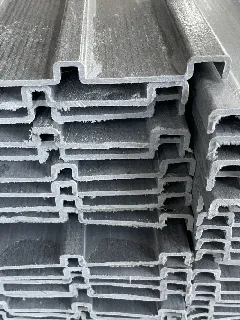loading...
- No. 9, Xingyuan South Street, Dongwaihuan Road, Zaoqiang County, Hengshui, Hebei, China
- admin@zjcomposites.com
- +86 15097380338
- Welcome to visit our website!
Optimizing Performance of Carbon Filter Vessels for Enhanced Filtration Efficiency
Understanding Carbon Filter Vessels An Essential Component in Modern Filtration Systems
In an era where environmental concerns are at the forefront of global discourse, the technology and methodologies used for air and water purification have become increasingly sophisticated. Among these technologies, carbon filter vessels stand out as pivotal components in various filtration systems. These vessels utilize the unique properties of activated carbon to remove impurities and contaminants, ensuring that the air we breathe and the water we consume remain clean and safe.
What is a Carbon Filter Vessel?
A carbon filter vessel is essentially a container designed to hold activated carbon, a form of carbon that has been treated to increase its porosity and surface area. This treatment enhances its ability to adsorb impurities effectively. The carbon's porous structure allows it to capture a wide array of contaminants, including volatile organic compounds (VOCs), chlorinated solvents, and certain heavy metals, making it invaluable in a range of applications from water purification to air filtration.
How Does it Work?
The process by which a carbon filter vessel operates is known as adsorption
. When contaminated air or water passes through the activated carbon, molecules of the impurities adhere to the surface of the carbon particles. This process is driven by the physical and chemical interactions between the carbon and the contaminants. Because activated carbon has a vast surface area—one gram can have the surface area equivalent to that of several football fields—it can trap substantial amounts of pollutants.It's important to note, however, that while activated carbon is highly effective for many types of contaminants, it is not universally effective for all. Some substances may require additional filtration methods for comprehensive purification. Therefore, understanding the specific requirements and potential contaminants of a given application is crucial in selecting the right filtration system.
Applications of Carbon Filter Vessels
carbon filter vessel

Carbon filter vessels are employed in a variety of settings. In the water treatment industry, they are commonly used to remove chemical impurities from drinking water. Municipal water treatment plants often incorporate carbon filters to ensure that the water supplied to households is free from potentially harmful substances.
In industrial settings, these vessels are integral to air pollution control systems. Factories use carbon filters to capture emissions before they are released into the atmosphere, ensuring compliance with environmental regulations and protecting public health. Similarly, commercial establishments, such as restaurants and cafes, use carbon filtration systems to maintain a clean and pleasant environment by eliminating unwanted odors and airborne pollutants.
Moreover, in residential applications, carbon filter vessels are often found in home water filtration systems, refrigerators, and air purifiers, allowing individuals to take charge of their health by ensuring the quality of the air and water in their living spaces.
Maintenance and Replacement
While carbon filter vessels are efficient, they do not last indefinitely. The effectiveness of the activated carbon diminishes as it becomes saturated with adsorbed contaminants, a process known as breakthrough. Regular monitoring is essential to determine when the carbon needs to be replaced. Depending on the application, this could range from every few months to annually. Failing to replace the carbon in a timely manner can lead to reduced filtration efficiency and potentially allow contaminants to re-enter the air or water supply.
Conclusion
In conclusion, carbon filter vessels are an essential technology in the quest for cleaner air and water. They offer a practical and effective solution for removing a wide variety of pollutants through the process of adsorption. As environmental standards evolve and awareness of the importance of clean resources grows, the role of carbon filtration in both industrial and residential applications will only become more significant. Understanding how these vessels work, their applications, and the importance of regular maintenance will help individuals and organizations make informed decisions for their filtration needs, ultimately contributing to a healthier planet.
-
Transform Your Spaces with FRP Grating SolutionsNewsNov.04,2024
-
The Versatility and Strength of FRP RodsNewsNov.04,2024
-
The Excellence of Fiberglass Water TanksNewsNov.04,2024
-
The Benefits of FRP Grating for Your ProjectsNewsNov.04,2024
-
Elevate Your Efficiency with FRP Pressure VesselsNewsNov.04,2024
-
Welcome to the World of FRP Pressure VesselsNewsOct.12,2024
-
Unveiling the Future of Filtration: Why FRP Filter Vessels are a Game ChangerNewsOct.12,2024
